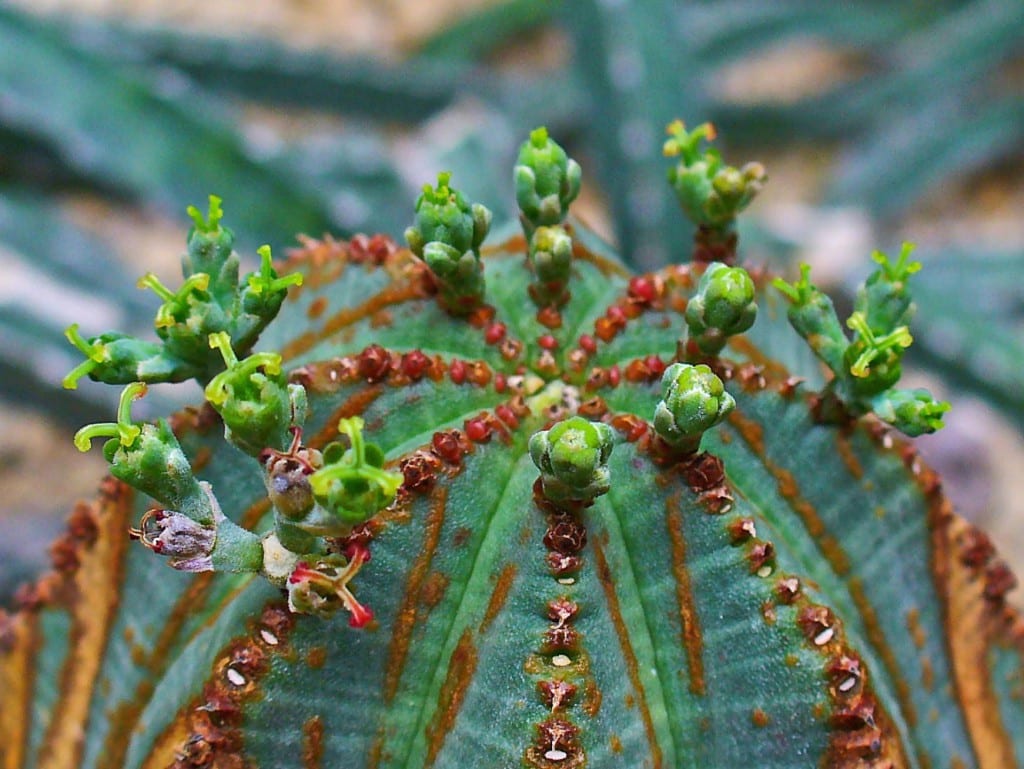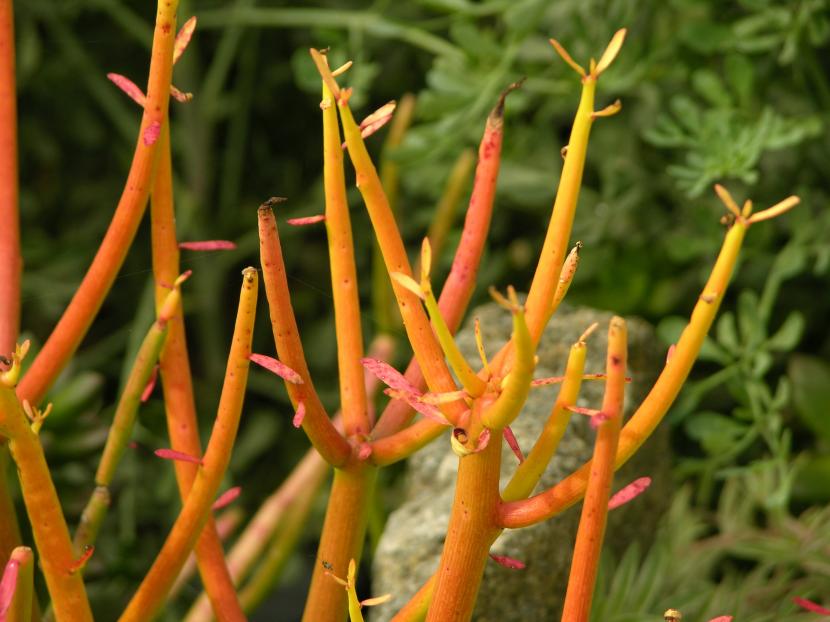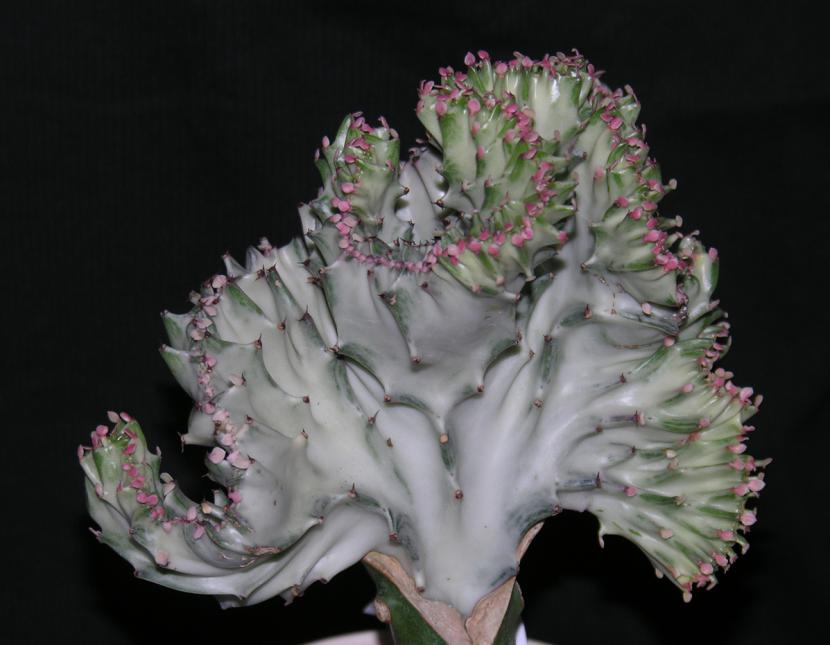
The gender of euphorbia it is a very broad and varied genre. So much so that we can find species that grow like wild herbs, and others more of the succulent type, there are even some that grow like trees reaching heights as incredible as six meters. It may not seem like much, but the truth is that it is an achievement that plants that are not woody reach such dimensions.
Thanks above all to the great diversity, the Euphorbia have managed to conquer practically the entire globe. Even if the human has also helped them…: Who can resist the beauty of the Obese euphorbia What can you see in the photo above? Thanks to this it is very common that they are included in the design of succulents gardens.

Euphorbia Tiruculli.
The most common species in nurseries are undoubtedly the easiest to grow and maintain, although without detracting from the rest! All species in this genus are generally low maintenance because they resist drought and high temperatures reasonably well. But (there is always a but), the downside is that they are sensitive to fungi that cause rot. This can be easily avoided by planting them in pots (or in fields) where substrate or soil facilitate water drainage, so that it does not stay wet for a long time.
Once at home, we must place it in an exhibition where it receives sunlight as directly as possible for the whole day. Unfortunately, they tend to have adaptation problems in rooms or in corners of the garden where there is shade for more than six hours (excluding those at night).

Euphorbia lactea f. crystal
Euphorbia that grow as succulents do not usually have pest or disease problems as long as the cultivation is adequate. Even so, in times of rain or in humid climates it is very necessary to put some snail repellent around them, since these mollusks can eat almost any plant: whether it has thorns or not.
Although they can withstand mild frosts without problems, temperatures below two degrees below zero can start to damage them. If this happens in your area, you can protect your plant indoors under glass.
Hey.
I would like to know if Euphorbia obesa have any medicinal properties.
Thanks.
Anna G
Hello Anna.
No, it doesn't have any. The latex of the Euphorbia is like that of the Ficus, when it comes into contact with the skin it irritates it, especially if it touches a wound or a cut.
A greeting.
I have one that has developed mold at the base of the trunk near where the substrate begins and where the trunk has grown, it is soft. What can I do to save it? We have a lot of affection for him
Hi John.
Mold (fungus) appears when a plant is overwatered. Euphorbia is well resistant to drought, but not to waterlogging.
Take it out of the pot and wrap its roots in absorbent paper, and keep it like that for a week, so that it loses moisture.
Then, plant it back in a pot with fresh substrate and treat it with fungicide. If you are in the northern hemisphere, as we are already in autumn you can sprinkle on the surface with copper or sulfur (during the summer it is not recommended to do so, since the roots could burn).
And to wait. Water again after 15-20 days.
A greeting.